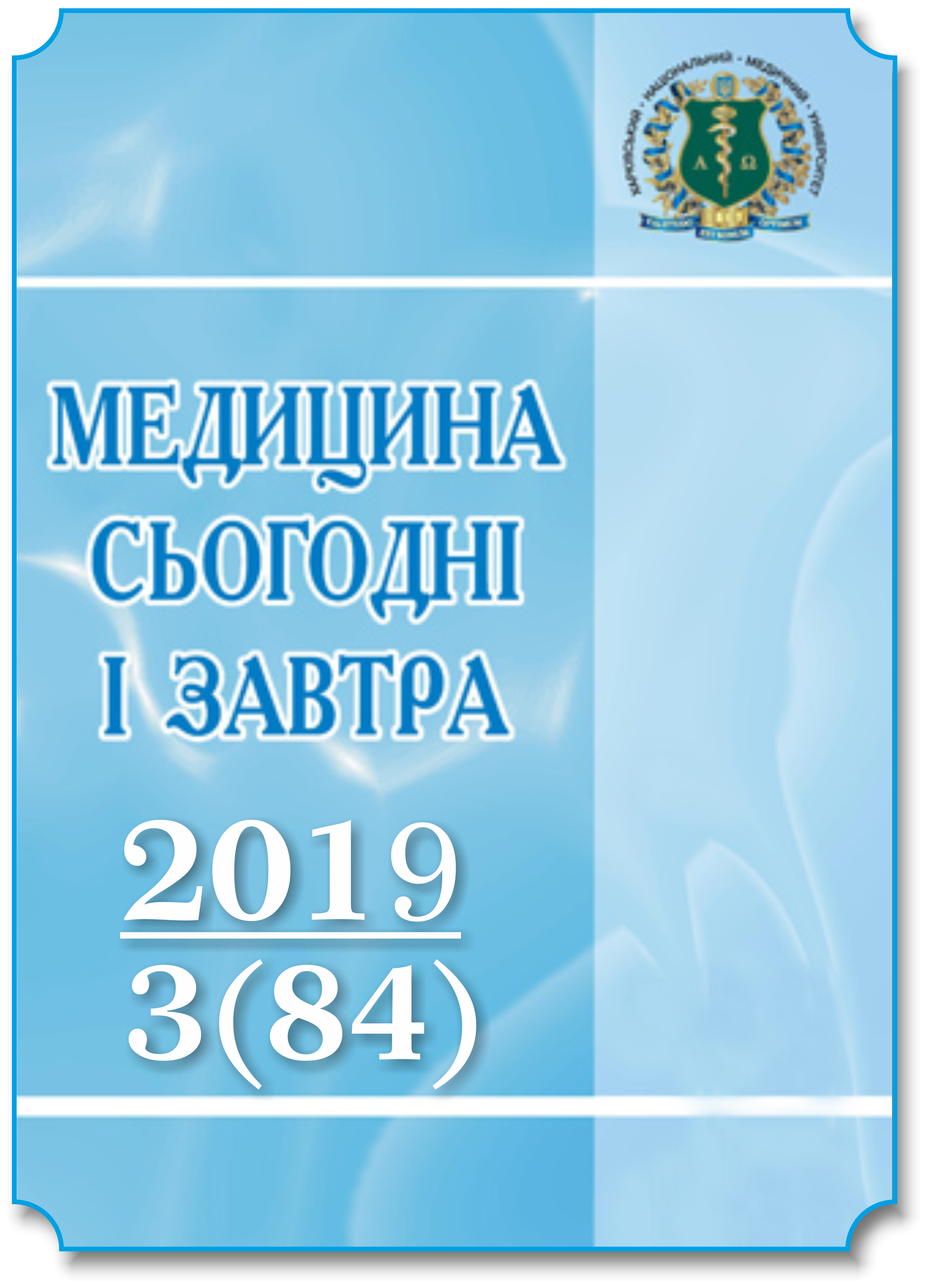Abstract
The study involved 150 women at 23–37 weeks of pregnancy: 120 women with the threat of premature birth (main group, MG), 30 women with the physiological course of pregnancy (comparison group, CG) and their husbands. The types of interaction in the mother–child–father triad with the threat of premature birth and after childbirth have been studied. A psychodiagnostic study revealed a reliably high level of the average value of reactive and personal anxiety in women with MG. The average indicator of the level of depression is higher in the MG, where there are cases of subdepressive state and severe depression, in the CG the latter was not revealed. According to the Cranley scale, at the first stage of the study, the level of attachment to the fetus in women from MG was (71,0±1,0) points (attachment disorder), in women from CG was (51,0±2,0) points (sufficient level of attachment), p<0,05. With the help of the «Pregnant Attitude Test», the prevailing type of woman’s attitude to her unborn child was determined in terms of the course of pregnancy. It was found that in 20,8 % of women, the euphoric type predominates, 9,17 % had the optimal type, 9,17 % had hyponosognosic type, 2,5 % had anxious type, 3,33 % had depressive type. In 26,7 % of women, CG has the optimal type. There are no other types of attitudes towards pregnancy. In women with MG, disorientation prevails at all stages of the examination (41–46 people), the dependent type (35–36), autonomous (23–29), and avoidance of proximity much less often was (14–16), in women with CG, the autonomous type dominates (10–13), dependent type (8–10), and avoidance of proximity (4–9) little less often were and disorientation (3–4) much less often was. At each stage of the survey, the level of social support in the MG is reduced relative to that in the CG. It is noted that in both groups the level of social support on two scales such as the support of colleagues at work and public organizations is reduced.
References
World Health Organization (2015). Preterm birth. Accessed 22 Sept. 2015.
World Health Organisation (2017). Maternal Mental Health.
Slattery M.M., Morrison J.J. (2002). Preterm delivery. Lancet, vol. 360, issue 9344, pp. 1489–1497, DOI https://doi.org/10.1016/S0140-6736(02)11476-0.
Slomian J., Emonts P., Vigneron L., Acconcia A., Glowacz F., Reginster J.Y. et al. (2017). Identifying maternal needs following childbirth: A qualitative study among mothers, fathers and professionals. BMC Pregnancy and Childbirth, vol. 17, article number 213, DOI 10.1186/s12884-017-1398-1.
Haelle T. (2015, May 8). Miscarriage misunderstood, often leaves women with guilt. Medical press. Retrieved from https://medicalxpress.com/news/2015-05-miscarriage-misunderstood-women-guilt.html.
Filippova H.H. (2008). Transformatsiia otnoshenii priviazannosti u zhenshchiny v period beremennosti [Transformation of attachment relationships in women during pregnancy]. Perinatalnaia psikholohiia i psikholohiia roditelstva – Perinatal Psychology and Psychology of Parenting, № 3, pp. 31–37 [in Russian].
Skrypnikov A.M., Herasymenko L.O., Isakov R.I. (2017). Perynatalna psykholohiia [Perinatal psychology]. Кyiv: Medknyha, 168 p. [in Ukrainian].
Vasilieva O.S., Mohilevskaia Ye.V. (2001). Hruppovaia rabota s beremennymi zhenshchinami: sotsialno-psikholohicheskii aspekt [Group work with pregnant women: socio-psychological aspect]. Psikholohicheskii zhurnal – Psychological Journal, vol. 22, № 1, pp. 82–89 [in Russian].
NICE (2014). National Institute for Health and Care Excellence: Antenatal and postnatal mental health: clinical and service management guidance, clinical guideline (CG192). 53 p. Retrieved from https://www.nice.org.uk/guidance/cg192.
Dobriakov I.V. (2012). Perinatalnaia psikholohiia – novyi razdel klinicheskoi (meditsinskoi) psikholohii [Perinatal psychology is a new section of clinical (medical) psychology]. Meditsinskaia psikholohiia v Rossii: elektronnyi nauchnyi zhurnal – Medical Psychology in Russia: electronic scientific journal, № 5 (16). Retrieved from http://mprj.ru/archiv_global/2012_5_16/nomer/nomer27.php.
Filippova H.H. (2005). Psikholohicheskaia hotovnost k materinstvu. Khrestomatiia po perinatalnoi psikholohii: psikholohiia beremennosti, rodov i poslerodovoho perioda [Psychological readiness for motherhood. Reader on perinatal psychology: psychology of pregnancy, childbirth and the postpartum period]. Мoscow: URAO, 328 p. [in Russian].
Filippova Yu.V. (2003). Psikholohicheskiie osnovy raboty s semiei: uchebnoie posobiie [Psychological foundations of working with the family: a tutorial]. Yaroslavl: Open Society Institute,103 p. [in Russian].
Liders A.H. (2007). Psikholohicheskoie obsledovaniie semii [Psychological examination of the family]. Moscow: Akademiia, 432 p. [in Russian].
Liders A.H. (2004). Semia kak psikholohicheskaia sistema [Family as a psychological system]. Moscow, Obninsk: Sotsialnyie nauki, 215 p. [in Russian].
Mendelevich V.D. (2008). Klinicheskaia i meditsinskaia psikholohiia: uchebnoie posobiie [Clinical and medical psychology: textbook]. (6th ed.). Moscow: MEDpress-inform, 432 p. [in Russian].
Eidemiller E.H., Yustitskis V. (2008). Psikholohiia i psikhoterapiia semii [Family psychology and psychotherapy]. (4th ed.). St. Petersburg: Piter, 672 p. [in Russian].
Walsh F. (2003). Family resilience: A framework for clinical practice. Family Process, vol. 42 (1), pp. 1–18.
Mead S., MacNeil C. (2006). Peer support: what makes it unique? Int. J. Psychosoc. Rehabilitation, vol. 10 (2), pp. 29–37.
Hrynko N.V. (2019). Zovnishni ta vnutrishni resursy psykholohichnoi pidtrymky u zhinok iz zahrozoiu peredchasnykh polohiv na III trymestri vahitnosti ta pislia polohiv [External and internal resources of psychological support for women at risk of premature birth in the third trimester of pregnancy and after childbirth]. Psykhosomatychna medytsyna ta zahalna praktyka – Psychosomatic Medicine and General Practice, vol. 4, № 4, pp. 1–9, DOI 10.26766/PMGP.V4I3-4.226 [in Ukrainian].

